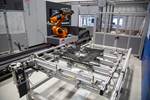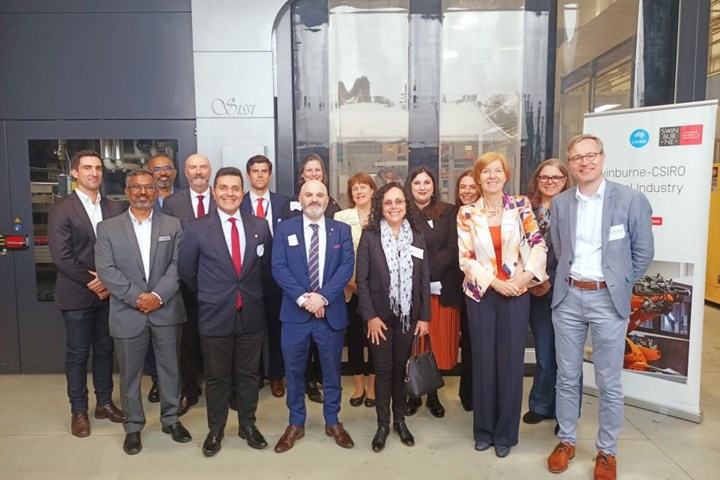Swinburne-CSIRO Testlab grows composites competency via industrial-scale 3D printing
Industry 4.0 facility is integrating an additive manufacturing approach to its holistic processes to optimize composite component production rates, quality and cost.
Swinburne University of Technology’s (Melbourne, Australia) Swinburne-CSIRO National Industry 4.0 Testlab, which provides fully digitally supported engineering and manufacturing solutions for parts, processes and entire systems, has recently highlighted its “world-first” fully automated, industrial-scale production facility using a 3D printing approach to carbon fiber composite component creation.
Based at Australian Government agency CSIRO’s Clayton facility, the Swinburne-CSIRO National Industry 4.0 Testlab supports innovative research and development for Swinburne’s Aerostructures Innovation Research (AIR) Hub, Victorian Hydrogen Hub, ARC Research Hub for Future Digital Manufacturing and collaborations with CSIRO's Data61 arm.
The Global Innovation Linkages program project is another key initiative of the facility. Developing a highly automated, flexible approach to the manufacturing process, the project integrates 3D printing technology with a distinctive composite curing process and digitization technologies. Swinburne notes that this will achieve a leap forward in increasing the production rates and quality of composites part manufacture, while reducing production costs.
“Testlab is already supporting groundbreaking projects in areas like aerospace, automotive, 3D printing and digital twinning,” says Industry 4.0 Testlab research director professor Boris Eisenbart. “This is only the start for this facility, and I am excited for what we can do next to continue to build our partnership with CSIRO and our industry network.”
The facility is anticipated to give the ability to generate, translate and accelerate research, training and technology into opportunities and a competitive advantage for Australia.
Related Content
-
PEEK vs. PEKK vs. PAEK and continuous compression molding
Suppliers of thermoplastics and carbon fiber chime in regarding PEEK vs. PEKK, and now PAEK, as well as in-situ consolidation — the supply chain for thermoplastic tape composites continues to evolve.
-
Sulapac introduces Sulapac Flow 1.7 to replace PLA, ABS and PP in FDM, FGF
Available as filament and granules for extrusion, new wood composite matches properties yet is compostable, eliminates microplastics and reduces carbon footprint.
-
Manufacturing the MFFD thermoplastic composite fuselage
Demonstrator’s upper, lower shells and assembly prove materials and new processes for lighter, cheaper and more sustainable high-rate future aircraft.
















